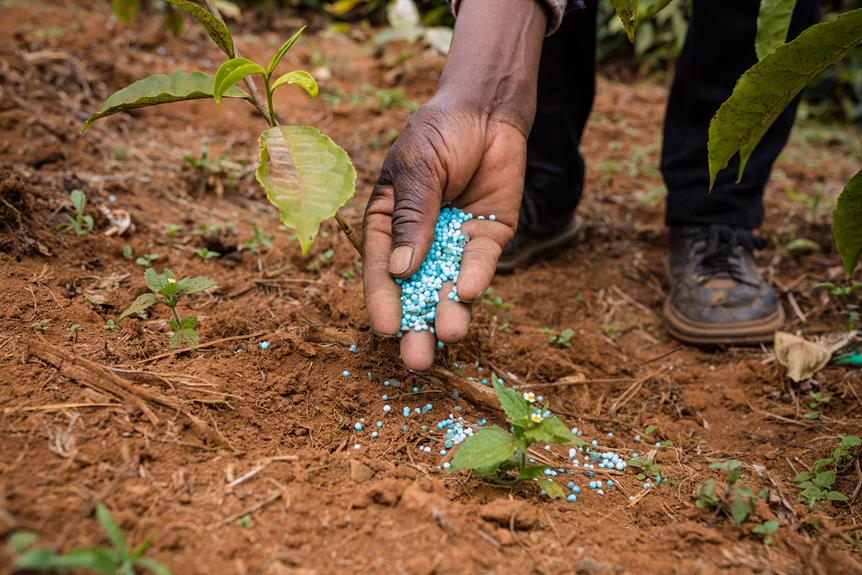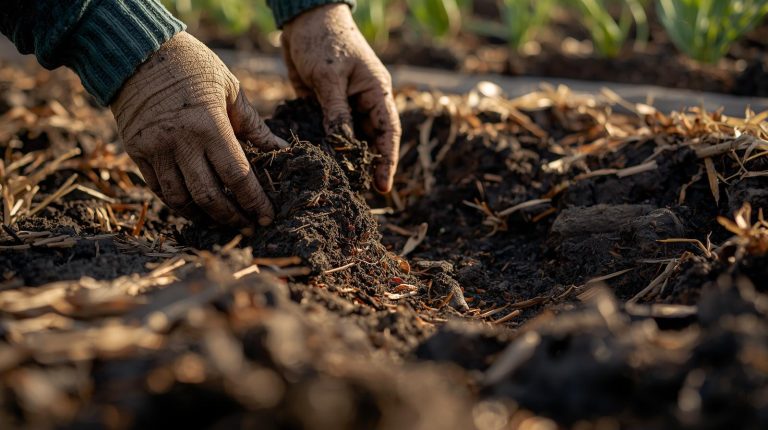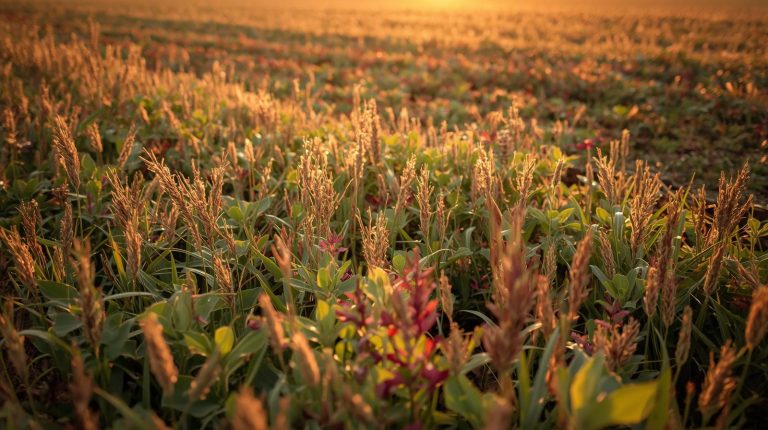Are you ready to unlock the secrets to thriving indoor plants that will make your space come alive? Look no further! In this guide, we present to you the top 9 tips for achieving the perfect soil and fertilizer for your indoor plants.
We, as fellow plant enthusiasts, understand the importance of creating a sense of belonging with our green companions. By using the right soil type, maintaining ideal pH levels, and choosing between organic and synthetic fertilizers, we can ensure our plants receive the nutrients they crave.
Join us as we delve into watering strategies, soil drainage, and common mistakes to avoid. With our recommendations, you’ll have the recipe for success in creating a flourishing indoor garden. Let’s get started!
Understanding Indoor Plant Nutritional Needs
In this article, we’ll explore the nutritional needs of indoor plants.
Indoor plant care is crucial for ensuring their optimal growth and health. One key aspect of indoor plant care is understanding plant nutrition. Just like humans, plants require a balanced diet to thrive.
Plant nutrition refers to the essential elements and compounds that plants need for their growth and development. These include macronutrients such as nitrogen, phosphorus, and potassium, as well as micronutrients like iron, manganese, and zinc.
Providing the right balance of these nutrients is essential for indoor plants to maintain their vigor and vitality.
Understanding the specific nutritional requirements of your indoor plants can help you create a suitable feeding regimen and ensure their long-term success.
Importance of Choosing the Right Soil Type
When it comes to indoor plants, choosing the right soil type is crucial for their overall health and growth. The soil pH plays a significant role in determining the availability of nutrients to the plants.
Understanding the nutrient requirements of the specific plants will help in selecting the appropriate soil type. Lastly, the soil’s drainage and aeration capabilities are essential for preventing waterlogging and ensuring proper oxygen supply to the roots.
Soil Ph for Plants
Our plants thrive when we choose the right soil type with the optimal pH level. Soil pH testing is crucial in determining the acidity or alkalinity of the soil. The pH scale ranges from 0 to 14, with 7 being neutral. Most indoor plants prefer a slightly acidic to neutral pH level, between 6 and 7.
Adjusting soil pH is essential to create an environment that promotes healthy plant growth. If the soil is too acidic, adding lime can help raise the pH level. On the other hand, if the soil is too alkaline, adding sulfur or peat moss can lower the pH.
Nutrient Requirements for Plants
By choosing the right soil type, we ensure that indoor plants receive the necessary nutrients for optimal growth and development. Understanding the nutrient requirements of plants is essential in providing them with the nutrients they need to thrive. Different plants have varying nutrient needs, and deficiencies can negatively impact their growth.
Essential nutrients for plants include macronutrients such as nitrogen, phosphorus, and potassium, as well as micronutrients like iron, manganese, and zinc. These nutrients play vital roles in various plant functions, including photosynthesis, root development, and overall plant health.
Soil Drainage and Aeration
To ensure optimal growth and development of indoor plants, it’s crucial to consider soil drainage and aeration when choosing the right soil type.
Soil drainage refers to the ability of the soil to allow excess water to flow through and prevent waterlogging, while aeration refers to the presence of air pockets in the soil, which allows oxygen to reach the roots.
Proper soil drainage and aeration are essential for maintaining the right soil moisture level and promoting root health. Soil that retains too much water can lead to root rot and other fungal diseases, while poor soil aeration can suffocate the roots and hinder nutrient uptake.
Therefore, selecting a soil type that provides adequate drainage and aeration is vital for the overall health and vigor of indoor plants.
Ph Levels: Finding the Ideal Balance
When it comes to indoor plants, achieving the ideal pH balance in the soil is crucial for their overall health and growth.
Understanding the difference between acidic and alkaline soil is the first step in maintaining this balance. Regularly testing the pH levels and making necessary adjustments ensures that the plants receive the optimal conditions they need to thrive.
Acidic Vs Alkaline Soil
We prioritize achieving the ideal balance of acidity and alkalinity in indoor plant soil to ensure optimal growth and health.
The pH level of soil determines whether it’s acidic or alkaline. Acidic soil has a pH level below 7, while alkaline soil has a pH level above 7.
It’s essential to understand the pH requirements of different plants, as they vary in their preference for acidic or alkaline soil. Some plants, like blueberries and azaleas, thrive in acidic soil, while others, such as lavender and roses, prefer alkaline soil.
Testing the pH level of your soil is crucial, as it allows you to make the necessary adjustments to maintain the ideal balance. Adding organic matter like compost or sulfur can help lower the pH of alkaline soil, while adding limestone or wood ash can raise the pH of acidic soil.
Testing and Adjusting Ph
In achieving the ideal balance of acidity and alkalinity in indoor plant soil, we must test and adjust the pH levels to find the ideal balance for optimal growth and health.
Testing the pH level of soil is crucial because it determines the availability of essential nutrients to the plants. There are several testing methods available, including using pH testing kits or meters. These tools allow us to measure the pH level accurately and determine whether the soil is too acidic or alkaline.
Once we’ve determined the pH level, we can then apply adjusting techniques to bring the soil to the desired pH range. This might involve adding amendments such as lime to raise the pH or sulfur to lower it.
Organic Vs. Synthetic Fertilizers: Pros and Cons
There are distinct advantages and disadvantages to using organic and synthetic fertilizers for indoor plants.
When considering the environmental impact, organic fertilizers are generally more sustainable as they’re derived from natural sources and don’t harm the ecosystem. On the other hand, synthetic fertilizers are often produced using non-renewable resources and can contribute to pollution and nutrient leaching.
In terms of nutrient availability, organic fertilizers release nutrients slowly over time, providing a steady supply to plants. Synthetic fertilizers, on the other hand, offer a quick and immediate nutrient boost, but the effects may not be long-lasting.
Lastly, organic fertilizers improve soil structure and promote beneficial microbial activity, enhancing the overall health of the plant. Synthetic fertilizers may not have the same positive effect on soil health.
The Role of Nutrient Composition in Fertilizers
Considering nutrient composition is crucial when selecting the right fertilizer for indoor plants. The nutrient composition of a fertilizer determines its effectiveness in promoting healthy growth and development.
Indoor plants require a balanced mix of essential nutrients, including macronutrients such as nitrogen, phosphorus, and potassium, as well as micronutrients like iron, manganese, and zinc. These nutrients play a vital role in various plant processes, including nutrient absorption, photosynthesis, and overall metabolic functions.
A fertilizer with the correct nutrient composition ensures that the indoor plants have access to the necessary elements for optimal growth.
Additionally, the nutrient composition of a fertilizer directly affects soil fertility. By replenishing the soil with essential nutrients, fertilizers help maintain a nutrient-rich environment that supports healthy plant growth and prevents nutrient deficiencies.
Watering Strategies for Indoor Plants
For maintaining healthy indoor plants, we need to implement effective watering strategies. Proper watering is crucial to ensure that plants receive the right amount of moisture for their growth and development. Here are three important tips to consider:
- Watering frequency: It’s important to water indoor plants regularly but not excessively. The frequency of watering depends on factors such as plant type, size, and environmental conditions. Monitor the moisture level of the soil and water when it starts to feel dry. Avoid overwatering, as it can lead to root rot and other moisture-related issues.
- Moisture retention: To improve moisture retention in the soil, consider using a well-draining potting mix that also retains water. Adding organic matter, such as peat moss or coconut coir, can help improve the soil’s ability to hold moisture. Additionally, using mulch on the soil surface can reduce evaporation and keep the moisture levels more stable.
- Watering technique: When watering indoor plants, aim to water the soil directly rather than the leaves. This helps prevent fungal diseases and allows the roots to absorb the water efficiently. Use a watering can with a narrow spout or a watering wand to target the soil and avoid splashing water on the foliage.
Soil Drainage: Ensuring Proper Aeration
To ensure optimal growth and prevent waterlogged roots, we must prioritize soil drainage and proper aeration for our indoor plants.
Adequate soil drainage is crucial for maintaining the right balance of soil moisture, which is essential for root health. When excess water accumulates in the soil, it displaces oxygen from the root zone, leading to suffocation and root rot.
To ensure proper soil drainage, choose a well-draining potting mix that contains ingredients like perlite or vermiculite. These materials help create air pockets in the soil, allowing excess water to drain away while maintaining adequate moisture levels.
Additionally, consider using pots with drainage holes to allow water to escape freely. Regularly checking the soil moisture and adjusting watering accordingly will help maintain a healthy balance for your indoor plants’ root health.
Avoiding Common Soil and Fertilizer Mistakes
After prioritizing soil drainage and proper aeration, we can now focus on avoiding common soil and fertilizer mistakes for our indoor plants. When it comes to soil composition, it’s important to avoid using heavy clay soils, as they can easily become compacted and hinder root growth. Instead, opt for a well-draining potting mix that contains a balance of organic matter and mineral components.
In terms of fertilizer application, one common mistake is overfertilizing. This can lead to nutrient imbalances and even burn the roots of your plants. Remember to follow the recommended dosage instructions and use a slow-release fertilizer to provide a steady supply of nutrients over time.
Another mistake to avoid is applying fertilizer to dry soil. It’s best to water your plants thoroughly before fertilizing to ensure that the nutrients are effectively absorbed by the roots. Additionally, be mindful of the specific nutrient requirements of your indoor plants and choose a fertilizer that’s tailored to their needs.
- Avoid heavy clay soils
- Don’t overfertilize
- Water plants before fertilizing
Best Soil and Fertilizer Recommendations for Indoor Plants
Now, let’s delve into our top recommendations for the best soil and fertilizer for indoor plants.
When it comes to indoor plant fertilizer options, there are a few key factors to consider. First, choose a fertilizer that’s specifically formulated for indoor plants. These fertilizers typically contain a balanced blend of nutrients that cater to the needs of indoor plants.
Look for fertilizers with a higher nitrogen content, as this will promote healthy leaf growth. Additionally, consider using slow-release fertilizers, which provide a steady supply of nutrients over time.
As for choosing the right potting mix, opt for a well-draining mix that retains moisture without becoming waterlogged. Avoid heavy soils that can suffocate the roots.
Look for potting mixes that contain a combination of organic matter, such as peat moss or coconut coir, and inorganic materials like perlite or vermiculite. This will ensure proper aeration and moisture retention for your indoor plants.
Conclusion
Choosing the right soil and fertilizer indoor plants is crucial for their health and vitality. By understanding their nutritional needs, maintaining the ideal pH balance, and providing proper watering and drainage, you can ensure optimal growth.
Whether opting for organic or synthetic fertilizers, it’s important to consider nutrient composition. Remember the old saying, ‘Healthy soil, healthy plants,’ and apply these tips to create the perfect environment for your indoor plants to thrive.




